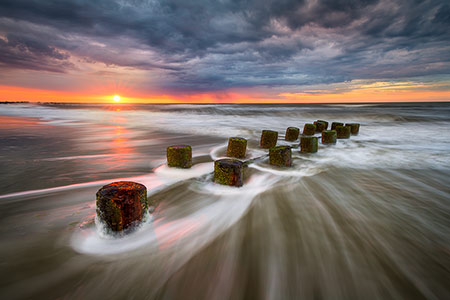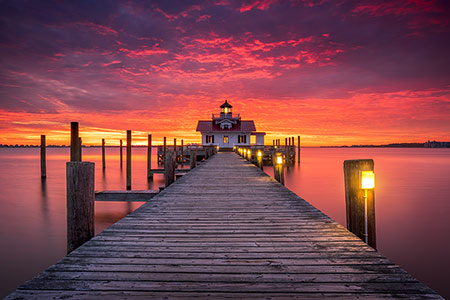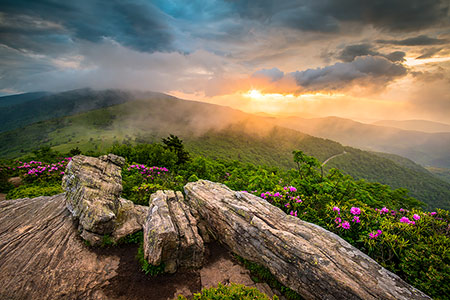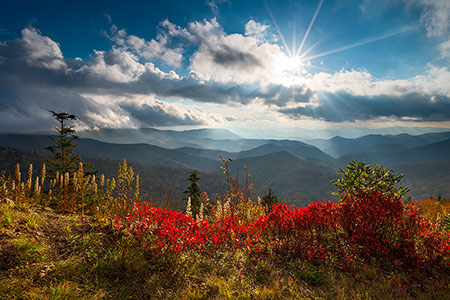 In the last article, we found out that we have to balance the three exposure controls (shutter, aperture, ISO) to get a good exposure. A little too much of this and our image is over exposed, not enough of that and our image is under exposed. So where do we start in order to figure out the proper exposure for our shot?
In the last article, we found out that we have to balance the three exposure controls (shutter, aperture, ISO) to get a good exposure. A little too much of this and our image is over exposed, not enough of that and our image is under exposed. So where do we start in order to figure out the proper exposure for our shot?
If we know we want to keep the ISO settings as low as possible (because of the quality issue), then we can start there to determine our exposure. That only leaves two other variables for us to figure out, Shutter Speed and Aperture. So how do you choose the right shutter and aperture settings to take your picture? Well, that depends on the type of picture you want to take.
Do you want to stop fast action in mid-air? Maybe you want to capture a nice silky waterfall? Or maybe it is a portrait of someone with a nice blurry background to make the subject really stand out. All these different photographic effects are achieved by simply choosing the right combination of aperture setting and shutter speed.
By altering the balance of shutter and aperture settings, you can create both motion blur and depth of field effects in your images. Choosing the proper balance of settings can make a world of difference in an image. In order to decide what settings are right for your image, you have to first ask yourself what is important to capture in the scene in front of you and how should the final image appear.
We've already discussed what the shutter is in a technical sense in the last article, so now we'll focus on the effect it has on the image that is captured.
Shutter speed can control how an image is captured by stopping fast moving action using very short shutter openings, and allowing things to motion blur with slower settings. A very fast shutter setting can stop fast moving action in its tracks, because the sensor only "sees" a very short clip in time. This is useful for shooting sports, race cars, kids, wildlife, and other fast moving objects.
If you slow the shutter speed down allowing it to stay open longer, anything in your scene that is moving will be blurred. This is not always a bad thing, as motion blur can be used to give a sense movement in an image. You can see this in an image where a race car has blur in the tires and background, giving the appearance of movement. It is also commonly used to give flowing water images that smooth and silky look.
In general, a fast shutter speed will help to keep images sharp by reducing movement. When holding the camera in your hand, you are moving as well as the subjects in your photo. Maximizing shutter speeds can help you capture sharp shots in almost any conditions.
To decide what shutter speed is right for your image will depend on what you are trying capture in your image. Ask yourself what is important in the image you are trying to capture, whether it should show a sense of movement or freeze the action in front you.
With slow shutter speeds, a tripod or some sort of stable camera support is always recommended. Most people can hold a camera steady enough to shoot sharp shots at around 1/50th sec., but there are variables that can affect that number greatly.
As with the shutter, we've already discussed what the aperture is in a technical sense in the last article, so now we'll focus on the effect it has on the image that is captured. Not only does a large aperture opening allow more light to fall on the sensor speeding up shutter speeds, but it also has an effect on the "depth of field".
The Depth of Field (or DoF) is the depth of the area in the photograph that is in focus. A shallow DoF means that only a small portion of the image is in focus. The distance that you are focused at will be the area in focus, and anything in front of or in back of that distance will be starting to blur. How shallow or wide the area in focus is depends on both your specific aperture setting and the subjects distance from the lens.
The larger the aperture setting you use, the smaller and more shallow the DoF is. This is useful for making subjects really stand out against an abstract smeared and blurry background. A small aperture opening will give a wide depth of field, keeping things both near and far in focus. This is useful when you have subjects near and far and you want them both to be in focus, such as in a landscape image.
So the aperture setting will mainly control two different things, the amount of light allowed through the lens and the Depth of Field.
A large aperture setting like f2.8 will allow a lot of light through the lens and produce a small DoF. The upside of this is that shutter speeds are fast because of the amount of light allowed through the lens, and the shallow depth of field can be pleasing in certain types of photographs. The fast shutter speeds at this setting make it easy to shoot moving subjects with your camera hand-held because motion blur isn't much of an issue.
A small aperture opening like f22 will only let a small amount of light through the lens, but offers a very deep DoF where everything near and far is in focus at the same time. This setting is good for landscape images where everything needs to be in focus, or for slowing down shutter speed in bright conditions to allow some motion blur for photographic effect. A tripod is usually needed at aperture settings like this.
The actual depth of the DoF at any setting depends on the focal distance, but that is another article in itself.
I hope these tips will help you to improve your own photography. Use the links to navigate forward, backward, or go to the "Main Menu".



